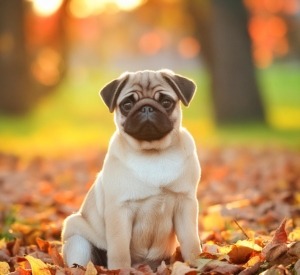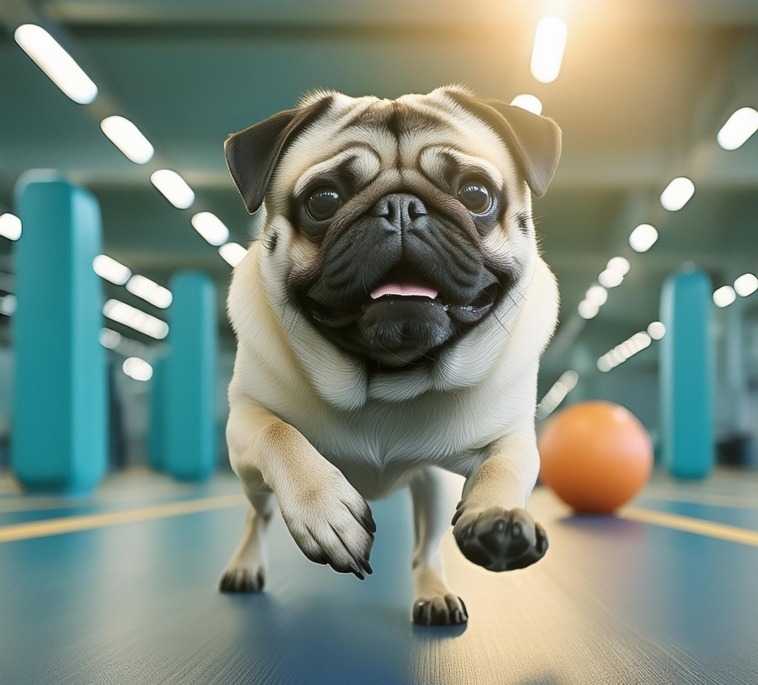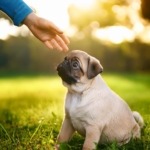Last updated on September 26th, 2024
Here’s an overview:
Introduction to Positive Reinforcement
Understanding the Pug’s Behavior
Why positive Reinforcement Works?
Creating a Consistent Training Schedule
Overcoming Common Training Challenges
Tracking Progress and Making Adjustments
Success Stories and Real-life Examples
How to Maintain Positive Behavior Long-Term
Additional Resources for Pug Owners
Conclusion: The Benefits of a Well-Trained Pug
Introduction to Positive Reinforcement
Positive reinforcement for pugs is a training technique that works effectively on dogs because it rewards the dog for performing the desired behaviors and this will encourage him to repeat them. When a reward is given for performing a behavior, the behavior becomes associated with positive consequences. It has been proven that this method is more effective and humane than punitive ones.
Key Elements for Positive Reinforcement
- Consistency: Regularly reinforce desirable behavior.
- Timing: Giving rewards immediately after behavior to have clear associations.
- Selection of Rewards: This may involve using treats, praise or toys as means of motivating the dog
In addition, owners are likely to build strong mutual trust with pets leading to even more well-behaved dogs who are also happier.
Understanding the Pug’s Behavior
Affectionate, sociable, and charming describe pugs. They were bred as companion animals throughout history so they crave human interaction. The following behavioral traits should be understood by owners:
- Stubbornness: patience may be required when training pugs which sometimes resist such efforts.
- Playfulness: they enjoy games and interactive activities.
- Attention-Seeking: they are often demanding affection and can exhibit signs of separation anxiety.
- Vocalization: though not very noisy, barking could mean something important with them.
When all these characteristics are known it would make training even better thus promote positive reinforcement while promoting harmony between pug and owner.
Why positive Reinforcement Works?
Positive reinforcement taps into the natural instincts of pugs to seek rewards instead of punishment. It makes learning easier by making training enjoyable rather than stressful. Additionally, this approach helps in building stronger bonding between an animal owner and his pet resulting into happy relationship where all parties cooperate willingly with each other’s needs being met positively too.

Benefits include:
- Increased Attention
- Improved Behavior
- Enhanced Confidence
- Faster Learning
By offering treats or using toys and praise, they are stimulated to repeat the processes thus creating a well-trained pug that is happy.
Setting Clear Training Goals
Establishing clear training goals is essential for successful positive reinforcement with pugs. Clear objectives enable structured progress and consistent communication.
- Identify Behaviors: These are specific behaviors which may include sitting, staying or walking calmly on a leash.
- Set Timelines: In order to stay motivated and keep track of progress, it is important to have realistic timeframes for achieving each behavior.
- Consistency: This should involve all family members following similar modes of training and cues.
- Reward System: It’s very important to come up with a plan for rewarding desirable behaviours making use of treats, praise or playtime.
- Regular Assessment: Goals should be periodically reviewed and adjusted taking into account the pug’s progress as well as its specific needs at that moment in time.
Following these guidelines will help develop an obedient dog that is always happy with itself (the pug).
Essential Tools and Rewards
In order to effectively reinforce good behavior in Pugs, there are certain tools and rewards one can employ. They include:
Tools
- Clicker: used for instant precise marking of desired behaviors during training sessions
- Treat Pouch: ensures easy accessibility of treats while carrying out a training session
- Leash & Harness: provides control but also maintains comfort
- Interactive Toys: this keeps the dogs engaged when teaching them or even playing together
Rewards
- High-Value Treats: small soft foods that are irresistible to Pugs can be used as high value treats
- Verbal Praise: phrases delivered in excited tone must be consistent at all times
- Playtime: incorporate favorite toys/games as rewards system within training regimen
- Affection: petting/ cuddling can reinforce positive habits.
Creating a Consistent Training Schedule
Training sessions have to be organized regularly hence the need to have a routine for them in the case of pugs. This should consist of short, frequent sessions that will keep the dog interested. Go for 10-15 minute segments at least twice daily. Be consistent about choosing the same time everyday.
- Morning Routine: The first session should be held after breakfast so that pugs remain alert.
- Evening Routine: The second one can be scheduled before dinner to avoid any kind of disturbances during the exercise.
Step by step Training Techniques
Identify Desired Behaviors
- Specify the behaviors that you want to increase.
- Focus on actions like sitting, staying or house training.
Use a Marker
- Use clicker or say something that your pug will make him know when he has done something right.
- Mark the exact moment the behavior occurs.
Deliver Rewards Immediately
- Give a treat or praise immediately after the action.
- Should be repeated consistently to get best results.
Gradual Increase in Difficulty
- Bring each stage of task completion for the pug slowly into play.
- Make sure your pug knows every step before proceeding with another one.
Short, Frequent Training Sessions
- Each training session should be not more than ten minutes long.
- Repetition supports learning better than any other method does
Positive, Calm Environment
- Keep it stress-free around here,
- Never punish them and avoid negative response whatsoever,
Overcoming Common Training Challenges
Training can sometimes pose a bit of a challenge especially if you have a stubborn breed like pugs. You need to be consistent and patient with the methods used. The following are some common problems:
Short Attention Span:
- Just use short attention span often stimulated through interactive sessions.
- Vary orders.
Stubbornness:
- Assertiveness is required but in a friendly way.
- Giving rewards when there is compliance encourages this behavior of obedience.
Distraction:
- Choose calm places for your dog’s education.
- Take some time so no noise would disturb Max and then start working with him among other distractions.
Socialization:
- Let your pet meet different people and animals.
- Rewarding acceptance of new things by being calm around them.
These challenges must be overcome through perseverance and patience so that you can have a well-trained Pug.
Tracking Progress and Making Adjustments
To successfully reinforce good habits through positive reinforcement for Pugs, it is important to track progress. This way one can easily recognize what works best as demonstrated by constant changes in behavior. Therefore, one can always adjust how they train dogs and achieve good results.
Key Monitoring Steps:
- Daily Logs: Keep a journal of training sessions detailing both achievements and failures as well.
- Behavioral Checklists: Have checklists for specific behaviors to quantify their improvements in numbers.
- Consistent Evaluation: Weekly evaluations should help understand if there are any changes that need to be made.
Adjustments to Consider:
- Intensity: Training tasks’ difficulty may go up or down,
- Rewards: The kinds and frequency of incentives may differ over time so as to maintain motivation
- Environment: When the surroundings prevent learning, try changing them.
These steps will ensure continued success in training programs
Success Stories and Real-life Examples
Case Study: Lucy the Pug
- Background: Lucy was a victim of separation anxiety.
- Approach: Her caregiver used positive reinforcement by giving her treats whenever she behaved calmly.
- Outcome: There was an evident reduction in Lucy’s level of anxiety even when she is left alone at home.
Rescue Pug, Max
- Background: Max suffered from fear aggression.
- Approach: His fosters were using clicker training with high-value treats for non-aggressive behavior.
- Outcome: Max gained confidence and became more sociable thus reducing aggressive incidents significantly.
Community Feedback
- Sarah M.: “Positive reinforcement turned my pug Toby from a stubborn puppy into a well-behaved pet.”
- Mike B.: “Now Bella, my pug follows commands easily because I use treats and praise.”
Common Mistakes to Avoid
These common mistakes can also interfere with effectiveness of positive reinforcement training for Pugs:
- Inconsistency: Every family member needs to use consistent reward systems,
- Punishment: Do not use negative reinforcements since they betray trust,
- Overfeeding: Introduce regular meals instead of just snacks,
- High Expectations: It takes different periods before dogs start showing progress;
- Delayed Reward: One should always try promoting immediate reward after doing the right thing.
- Ignoring Small Wins: Celebrate small victories that will make your pet more assured
- Lack of Patience: Necessary as time is crucial to training.
How to Maintain Positive Behavior Long-Term
To ensure positive behavior in pugs long-term, repetition and consistency are critical. Consistent Training Sessions Conduct regular, short training sessions to reinforce desired behaviors.
- Expensive Prizes
Keeping the morale up with different high-value food and positive words.
- Positive Interaction
To have nothing to do with anything negative, interact with a pug in a positive manner.
- Routine and Structure
Create a daily regimen that offers stability and predictability.
- Mental Stimulation
Engage your pug in puzzle toys or interactive play to exercise its mind.
- Regular Socialization
Exposing the Pug to different environments and social settings will help it build confidence.

Additional Resources for Pug Owners
There are many resources available to choose from if you need more information regarding positive reinforcement methods. These sources are full of expert advice as well as practical tips specifically related to Pugs.
Books
- Miller, Pat. “The Power of Positive Dog Training.”
- Gewirtz, Elaine Waldorf. “Pugs For Dummies.”
- Pryor, Karen. “Don’t Shoot the Dog!”
Websites
- American Kennel Club (AKC): Tips on training and behavior modification.
- Pug Village: Specialized suggestions for Pugs together with community support system.
- Positive Reinforcement Training: Techniques and strategies.
Videos
- Training tutorials on YouTube by trainers like Victoria Stilwell.
- Webinars on platforms like Petco and Chewy.
Conclusion: The Benefits of a Well-Trained Pug
There are multiple advantages that can be gotten from using the approach of positive reinforcement when training pugs:
- Improved Behavior: Fewer behavior problems arise as a result of consistent training.
- Mental Stimulation: This keeps boredome away thus preventing anxiety, hence pets engages mentally.
- Strengthened Bond: With each other they develop stronger ties based on trust between them.
- Enhanced Socialization: Interacting better wuth other dogs ans humans is associated with well-trained pugs.
- Healthier Lifestyle: Being involved into active trainings helps its overall physical condition especially for breeding purposes such as pregnancy in female pugs.
This ensures that your pet remains happy, loving and well-adjusted all the time because positive reinforcement is always constant.
Article from: Abdullah (Senior Trainor)




